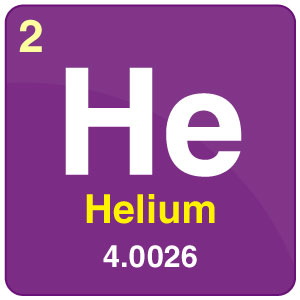Chemistry
Vocabulary [A to Z]
Part - 4 (151 to 212)
151. Orbit
the path of an electron around the nucleus of an atom
152. Orbital
relating to the path of one body around another
153. Organic Compound
any compound of carbon and another element or a radical
154. Osmosis
diffusion of molecules through a semipermeable membrane
155. Oxidation
the process by which a substance combines with oxygen
156. Oxidation Number
the degree of oxidation of an atom or ion or molecule
157. Oxidation-Reduction
a reversible chemical reaction in which one reaction is an oxidation and the reverse is a reduction
158. Oxidize
enter into a combination with oxygen
159. Periodic Law
(chemistry) the principle that chemical properties of the elements are periodic functions of their atomic numbers
160. Periodic Table
arrangement of chemical elements according to atomic number
161. Ph
a measure of the acidity or alkalinity of a solution
162. Phase
a distinct state of matter in a system
163. Phase Change
a change from one state (solid or liquid or gas) to another without a change in chemical composition
164. Ph Scale
a measure of the acidity or alkalinity of a solution
165. Physical Change
a change from one state (solid or liquid or gas) to another without a change in chemical composition
166. Physical Property
any property used to characterize matter and energy and their interactions
167. Plasma
a fourth state of matter distinct from solid, liquid or gas
168. Polar
having a pair of equal and opposite charges
169. Polyatomic
of or relating to a molecule made up of more than two atoms
170. Polymer
a naturally occurring or synthetic compound
171. Polymerization
a chemical process that combines several monomers to form a polymer or polymeric compound
172. Precipitate
a substance separated from a solution or suspension
173. Precision
the quality of being reproducible in amount or performance
174. Product
a chemical substance formed as a result of a reaction
175. Property
a basic or essential attribute shared by members of a class
176. Proton
a stable particle with positive charge
177. Radiation
energy transmitted in the form of rays or waves or particles
178. Radioisotope
a radioactive isotope of an element
179. Reactant
a chemical substance present at the start of a process
180. Reaction
a process in which a substance is changed into another
181. Reagent
a substance for use in chemical reactions
182. Redox
a reversible chemical reaction in which one reaction is an oxidation and the reverse is a reduction
183. Rusting
the formation of reddish-brown ferric oxides on iron by low-temperature oxidation in the presence of water
184. Salinity
the relative proportion of salt in a solution
185. Saponification
a chemical reaction in which an ester is heated with an alkali (especially the alkaline hydrolysis of a fat or oil to make soap)
186. Solid
matter with definite shape at room temperature and pressure
187. Solubility
the quality of being easily dissolved in liquid
188. Solute
the dissolved matter in a solution
189. Solution
a homogeneous mixture of two or more substances
190. Solvent
a liquid substance capable of dissolving other substances
191. Specific Heat
the heat required to raise the temperature of one gram of a substance one degree centigrade
192. State Of Matter
(chemistry) the three traditional states of matter are solids (fixed shape and volume) and liquids (fixed volume and shaped by the container) and gases (filling the container)
193. Stoichiometry
(chemistry) the relation between the quantities of substances that take part in a reaction or form a compound (typically a ratio of whole integers)
194. Stp
standard temperature and pressure
195. Subatomic Particle
a body having finite mass and internal structure but negligible dimensions
196. Sublimation
a change directly from the solid to the gaseous state
197. Subscript
character printed slightly below and to the side of another
198. Substance
a particular kind of matter with uniform properties
199. Surface Tension
phenomenon at a liquid's surface from intermolecular forces
200. Suspension
a mixture in which fine particles are supported by buoyancy
201. Temperature
the degree of hotness or coldness of a body or environment
202. Test Tube
glass tube closed at one end
203. Thermochemistry
the branch of chemistry that studies the relation between chemical action and the amount of heat absorbed or generated
204. Thermodynamics
physics concerned with heat and other forms of energy
205. Titration
a measured amount of a solution of unknown concentration is added to a known volume of a second solution until the reaction between them is just complete; the concentration of the unknown solution (the titer) can then be calculated
206. Valence
the combining power of an atom or radical
207. Valence Electron
an electron in the outer shell of an atom which can combine with other atoms to form molecules
208. Vaporization
the process of becoming a suspension of particles in the air
209. Viscosity
resistance of a liquid to flowing
210. Volume
the amount of 3-dimensional space occupied by an object
211. Weight
the vertical force exerted by a mass as a result of gravity
212. Yield
an amount of a product

No comments:
Post a Comment